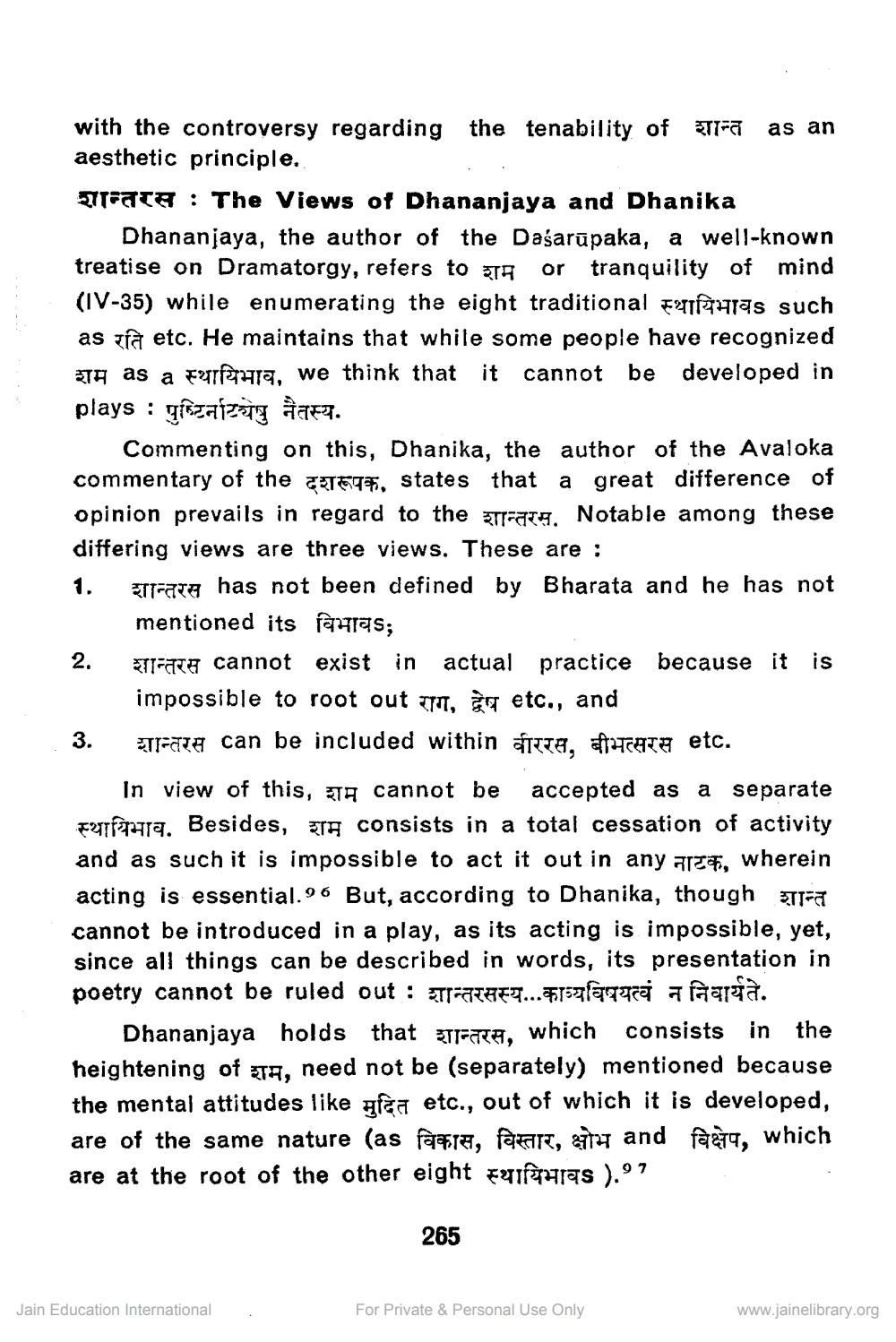________________
with the controversy regarding the tenability of FA aesthetic principle..
AIFATA: The Views of Dhananjaya and Dhanika
Dhananjaya, the author of the Daśarupaka, a well-known treatise on Dramatorgy, refers to or tranquility of mind (IV-35) while enumerating the eight traditional as such as fà etc. He maintains that while some people have recognized शम as a स्थायिभाव, we think that it cannot be developed in plays : पुष्टिर्नाटयेषु नैतस्य.
Commenting on this, Dhanika, the author of the Avaloka commentary of the , states that a great difference of opinion prevails in regard to the. Notable among these differing views are three views. These are :
1.
A has not been defined by Bharata and he has not mentioned its विभावs;
शान्तरस cannot exist in actual practice because it is impossible to root out, etc., and
शान्तरस can be included within वीररस, बीभत्सरस etc.
In view of this, cannot be accepted as a separate स्थायिभाव. Besides, शम consists in a total cessation of activity and as such it is impossible to act it out in any, wherein acting is essential.96 But, according to Dhanika, though
cannot be introduced in a play, as its acting is impossible, yet, since all things can be described in words, its presentation in poetry cannot be ruled out : शान्तरसस्य... काव्यविषयत्वं न निवार्यते.
2.
3.
as an
Dhananjaya holds that शान्तरस, which consists in the heightening of я, need not be (separately) mentioned because the mental attitudes like fa etc., out of which it is developed, are of the same nature (as विकास, विस्तार, क्षोभ and विक्षेप, which are at the root of the other eight स्थायिभावs ). 7
Jain Education International
265
For Private & Personal Use Only
www.jainelibrary.org




